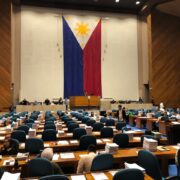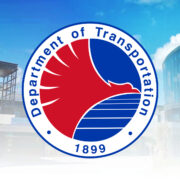Pasig River rehab: The bottom line

The administration’s program to rehabilitate the Pasig River got a $20-million funding support from the United Arab Emirates, boosting the momentum to pursue the restoration of the historic and once-pristine waterway after decades of neglect.
First Lady Liza Araneta-Marcos announced the UAE donation, equivalent to some P1.55 billion, during the World Governments Summit in Dubai last week where she also witnessed the signing of agreements between the Department of Environment and Natural Resources and the Clean Rivers (Erth Zayed Philanthropies). The nonprofit organization under the patronage of UAE President Mohamed bin Zayed Al Nahyan is funding efforts to remove plastic pollution from river systems around the world.
Thanking the UAE for the donation, Araneta-Marcos said: “We would be able to clean our river and hopefully make it a showcase much like Chao Phraya River in Bangkok or the Seine in Paris.” In her speech, the First Lady mentioned the Pasig River Urban Development program initiated by her husband, President Marcos, to rehabilitate the “polluted, dirty, and stinky” river and bring it back to life.
“Slowly but surely, we were able to construct an esplanade where everyone from all walks of life could bike, stroll, and break bread along the river,” Araneta-Marcos said. She expressed hope that the improvements would be completed in time for the country’s hosting of the Association of Southeast Asian Nations (Asean) summit next year.
Pristine condition
Executive Order No. 35 issued in July 2023 mandated the rehabilitation of the 27-kilometer river to its “historically pristine condition conducive to transport, recreation, and tourism,” and established an interagency committee to coordinate rehabilitation efforts among government agencies.
A 500-meter esplanade was built in January last year behind the Manila Central Post Office as a showcase for the project. The second phase at Plaza Mexico, Magallanes Drive in Intramuros was launched in June 2024, while the third phase—the 305-meter Fort Santiago Riverwalk which will connect the historic Fort Santiago and the Pasig River Esplanade—was set to be launched last Monday.
Once an important transport route and source of water during the Spanish era and on which banks the center of government and cities rose, Pasig River suffered neglect and abuse with the increase in population and economic activities after World War II. By the 1990s, the river was unable to sustain marine life and was declared biologically dead. In April 2021, it was considered the most polluted body of water in a global study of rivers published in Science Advances, a journal of the American Association for the Advancement of Science.
Daunting challenge
Every administration since Ferdinand Marcos Sr. tried to rehabilitate the river, but such grand plans fizzled out or were eventually dropped. The second Marcos administration has picked up the daunting challenge, with the First Lady taking up the cause albeit in an unofficial capacity.
While a good plan has been set in motion, backed by domestic and foreign funding, it is crucial that the river’s rehabilitation goes beyond beautification. The more daunting task is to get to the bottom of the problem—quite literally—with the clean-up of decades-worth of garbage and pollution in the riverbed and the relocation of informal settlers along its banks and tributaries.
This requires massive resources and, fortunately, the private sector and global financiers like the UAE, are ready to pitch in. Conglomerate San Miguel Corp. (SMC), on its own, has undertaken a P2-billion clean-up of the Pasig River and has, since 2021, hauled out 1.3 million tons of silt and solid waste from the waterway. While commendable, its efforts are tied with the construction of an elevated expressway above the river, a plan shelved in 2023 due to mounting criticisms that the expressway would “entomb” the river and cause more pollution.
Sustainable leisure
In a disclosure to the Philippine Stock Exchange in May 2024, SMC said it was still conducting a viability study on the project. The expressway may now be out of sync with the current administration’s blueprint for the rehabilitation of the river. But has this divergent view been communicated to the conglomerate so that rehabilitation efforts can be coordinated, and time and resources appropriated better?
The rehabilitation will also require the enforcement of environmental laws, starting with the crackdown on industries that have used the river as dumping ground for their toxic wastes. Such step should test the government’s political will and its commitment to addressing waste and air pollution.
Beyond the immediate goal of showcasing an impressive esplanade along the Pasig River to Asean guests next year, the Marcos administration must pursue the waterway’s rehabilitation to preserve its cultural history, restore its use as an efficient transport route, and allow locals unfettered access to sustainable leisure.

















